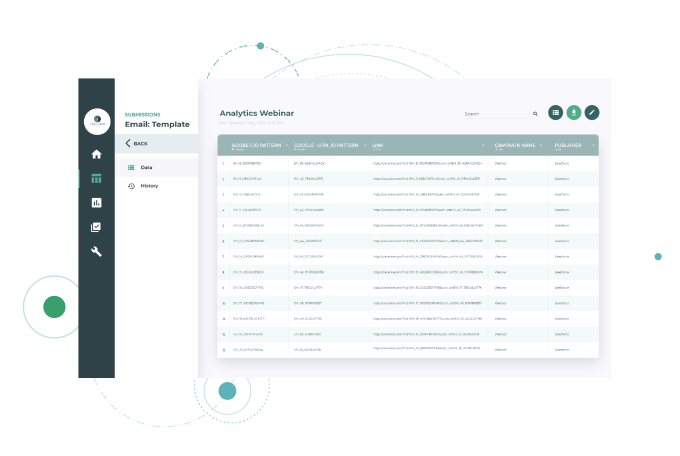Marketing data management platform Claravine nabs $16M – TechCrunch

Claravine, a self-described marketing data platform, today announced that it raised $16 million in a Series B round led by Five Elms Capital with participation from Grayhawk Capital, Next Frontier Capital, Peninsula Ventures, Kickstart Fund, and Silverton Partners. CEO Verl Allen says that the new money, which brings the company’s total raised to $27.9 million, will be used to double Claravine’s headcount to 88 employees by the end of the yea and support product R&D.
Claravine was founded in 2012 as Tracking First, a company focused on streamlining the tracking code process for large organizations. Tracking code is a snippet of code that tracks the activity of a website visitor by collecting data and sending it to an analytics module, usually for marketing purposes.
According to Allen, Tracking First had “gritty founders” who “knew the space well” and had “high-quality” customers, but the focus was too narrow. “There was a realization that there was a bigger underlying problem that was being ignored in the market, which our solution had the potential to address,” Allen told TechCrunch in an email interview. “In 2018, I joined as CEO and helped the organization — now Claravine — to grow and expand the ways we could help the largest organizations in the world take a proactive approach to their data.”
Claravine’s product is designed to help enterprises control what flows through their tech stack, especially business intelligence and analytics software, and manage their marketing data standards — the blueprints for defining common formats for data across regions, teams, and campaigns. Via an API and integrations with platforms including Adobe Experience Manager and Workfront as well as media platforms like Google Ads, Claravine supports teams in managing parameters of these standards over time.
“[F]or many organizations, decision-makers have to rely on untrustworthy data for business decisions … [These] decision-makers rely not just on technologies and data but humans, and that creates a large possibility for error in the data entry process, exacerbated by all the disconnected technologies and teams,” Allen said. “This is why our solution is built to engrain standards into the way business teams work and collaborate as they create and modify data. By facilitating a common understanding of standards as inputs are generated and reviewed, organizations have greater control early on, whatever their needs. And downstream data users can move with more confidence and speed when using this data to make decisions.”

Claravine’s data management platform.
Toward this end, Claravine provides a dashboard where companies can build taxonomies using descriptions, lists, values, and referenceable fields. Using the platform, a user can bring in a tracking code data set, for example, and standardize it — automatically verifying that no information is missing. Claravine also offers consulting services to assist companies with evaluating the current state of their data standards. For a fee, staffers outline alternative approaches, recording things like naming conventions, rules, and custom attributes in a central location for reference.
“Data standards enable organizations to build a solid foundation of data by reducing human error upfront and unlocking a greater depth and breadth of data for use … By building in data integrity early on and pushing this data into core systems including cloud storage, you give back time to downstream teams otherwise lost to cleaning and translating,” Allen said.
Allen sees Claravine’s main competition as spreadsheet-based processes, internally-built worklows, and — increasingly — no-code apps. While he admits it can be difficult to convince teams to manage their data standards in a platform as opposed to siloed solutions, he argues that the cost of not doing so is too high.
Underlining Allen’s point, a recent Gartner survey found that only 14% of companies have achieved what they consider to be a “360-degree view” of their customer, owing to poor-quality data and other organizational hurdles.
“While some organizations may try to define and distribute data requirements in documents, structured spreadsheets or homegrown solutions, these create immense challenges around change management, version control, access, and process resulting in challenges in the readiness and reliability of data, particularly for global organizations,” Allen said. “The status quo for marketing operations, measurement, and data teams is no longer good enough.”
Mum’s the word on Claravine’s annual recurring revenue (ARR) — Allen declined to say — but the startup has close to 100 customers, including Under Armour, Ancestry, and Vanguard. From 2020 to 2021, Allen says that Claravine saw over 40% ARR growth and 95% gross revenue retention, which refers to the percentage of recurring revenue retained from existing customers, including cancellations.
“Claravine has carved out a new category that continues to redefine how top brands manage their digital experience. We have been exceptionally impressed by Verl, his team, and their mission,” Stephanie Schneider, a partner at Five Elms Capital, told TechCrunch via email when contacted for comment. “Claravine is positioned to become a dominant player in the space as it continues to scale its platform and offerings. We are proud to support the company on this exciting growth trajectory.”
Recent Posts
- Smaller businesses ‘more fearful and cautious’, Aito conference warned
- RK Janji Permudah Izin Dirikan Rumah Ibadah Semua Agama Jika Menang
- Colliers Quick Hits | From Travel Volumes to Labor Costs: 10 Trends Driving Hospitality Toward 2025
- Donald Trump watches SpaceX launch with Elon Musk, but test flight does not go as planned | US News
- Remaja Asal Bandung Jadi Korban TPPO di Saudi, Terlena Iming-iming Gaji
Recent Comments